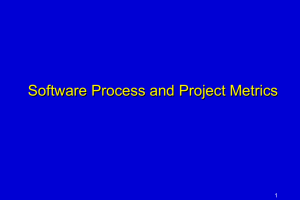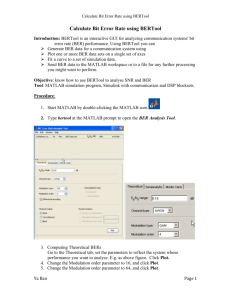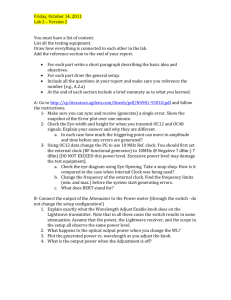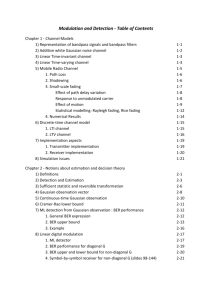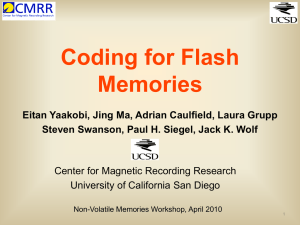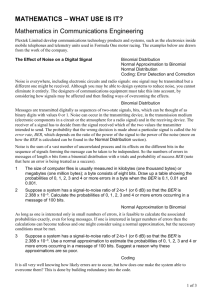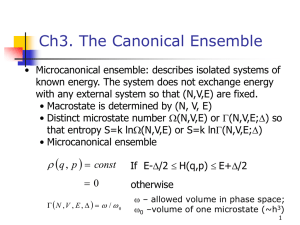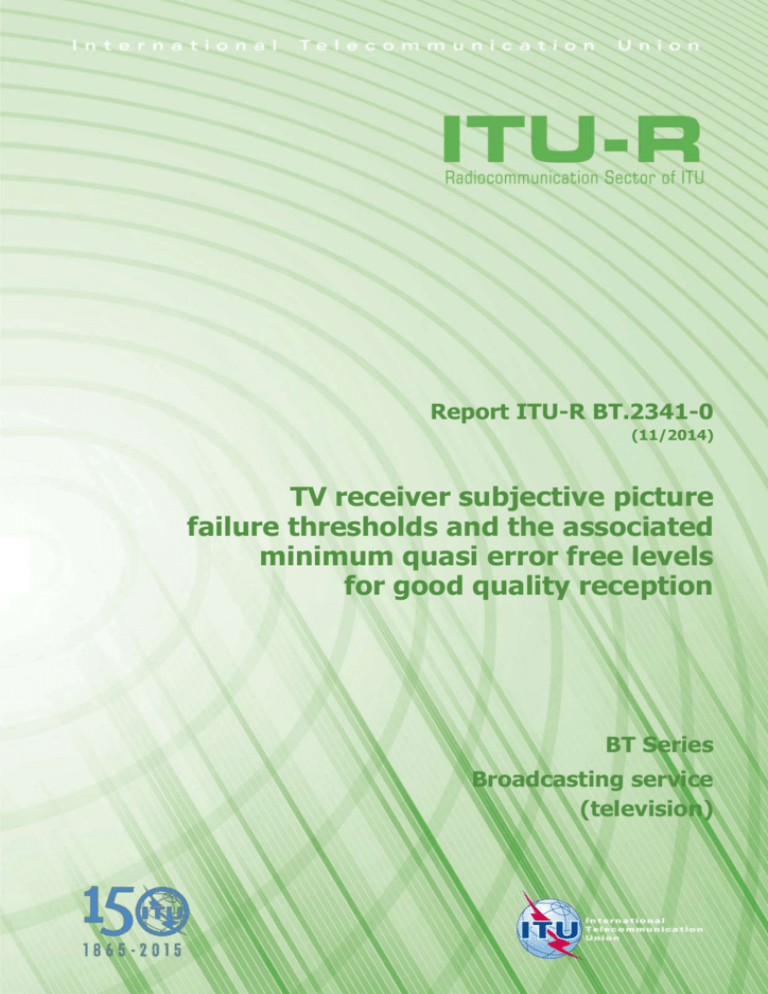
Report ITU-R BT.2341-0
(11/2014)
TV receiver subjective picture
failure thresholds and the associated
minimum quasi error free levels
for good quality reception
BT Series
Broadcasting service
(television)
ii
Rep. ITU-R BT.2341-0
Foreword
The role of the Radiocommunication Sector is to ensure the rational, equitable, efficient and economical use of the radiofrequency spectrum by all radiocommunication services, including satellite services, and carry out studies without limit
of frequency range on the basis of which Recommendations are adopted.
The regulatory and policy functions of the Radiocommunication Sector are performed by World and Regional
Radiocommunication Conferences and Radiocommunication Assemblies supported by Study Groups.
Policy on Intellectual Property Right (IPR)
ITU-R policy on IPR is described in the Common Patent Policy for ITU-T/ITU-R/ISO/IEC referenced in Annex 1 of
Resolution ITU-R 1. Forms to be used for the submission of patent statements and licensing declarations by patent holders
are available from http://www.itu.int/ITU-R/go/patents/en where the Guidelines for Implementation of the Common
Patent Policy for ITU-T/ITU-R/ISO/IEC and the ITU-R patent information database can also be found.
Series of ITU-R Reports
(Also available online at http://www.itu.int/publ/R-REP/en)
Title
Series
BO
BR
BS
BT
F
M
P
RA
RS
S
SA
SF
SM
Satellite delivery
Recording for production, archival and play-out; film for television
Broadcasting service (sound)
Broadcasting service (television)
Fixed service
Mobile, radiodetermination, amateur and related satellite services
Radiowave propagation
Radio astronomy
Remote sensing systems
Fixed-satellite service
Space applications and meteorology
Frequency sharing and coordination between fixed-satellite and fixed service systems
Spectrum management
Note: This ITU-R Report was approved in English by the Study Group under the procedure detailed in
Resolution ITU-R 1.
Electronic Publication
Geneva, 2015
ITU 2015
All rights reserved. No part of this publication may be reproduced, by any means whatsoever, without written permission of ITU.
Rep. ITU-R BT.2341-0
1
REPORT ITU-R BT.2341-0
TV receiver subjective failure thresholds and the associated minimum quasi
error free levels for good quality reception
(2014)
Keywords
Subjective failure point, SFP, quasi-error free, QEF, bit error rate, BER, ATSC, DVB-T, DVB-T
1
Introduction
TV transmission standards have a common theme of being capable of delivering a viewing experience
to the end user consumer of apparently error free programs. This has been the background through
all the formats across satellite DVB-S, cable DVB-C, and digital terrestrial television ATSC and
DVB-T as well as the more recent versions including portable handheld variants.
This Report is to help provide the practical background to the various measurement methods for
protection ratios in today’s standards and the necessary link to establishing a quasi-error-free (QEF)
working system environment when planning transmission networks.
The QEF capability requires suitable wanted signal to total noise plus interference signal levels and
has its origins in the earlier days of these standards well over 20 years ago. The relevant background
information has almost disappeared from current literature leaving in many cases only a short
description of measurement techniques. The background to the pragmatic measurement approaches
has been lost especially where consumer goods do not always provide access to the raw decoder
telemetry outputs.
This Report provides information on the different measurement methods used in the TV industry to
determine DTT receiver performance in the presence of noise, multipath effects and interference. The
aim is to show the differences between C/N relating to the picture quality tests used in ITU-R study
group measurement contributions, and the C/N relating to acceptable picture quality (typically better
than QEF – one visible error/hour) for normal broadcast reception.
This contribution only considers the case where the channel impairment is static in time so that the
observed picture errors are relatively independent of the video source coding characteristics such as
I-frame separation (which becomes more important when dealing with infrequent bursts of
interference).
Measurements were made of DVB-T post-Viterbi BER and post-Reed-Solomon (RS) decoder BER
on a DVB-T demodulator using PRBS data in three different static channel conditions to compare
with the DVB defined QEF BER conditions (post-Viterbi BER of 2 10–4 or post-RS BER < 1
10–11). These measurements were compared with picture failure measurements made with real video
streams in the same three channel conditions using the criteria of no visible errors in 60 seconds,
noting the difference in C/N between the two sets of measurements for each channel condition.
Measurements were also made with a DVB-T2 demodulator for a fixed Ricean channel, noting the
difference in C/N between QEF and no visible errors in 60 s.
2
Rep. ITU-R BT.2341-0
In addition, measurements were made with the ATSC digital television system. These measurements
involve an in-depth comparison of reception thresholds determined by the visual subjective failure
point (SFP) method and the objective measurement of bit error rate (BER).
2
Results and conclusions
For DVB-T, the C/N required to meet the post Viterbi BER 2 10–4 QEF equivalent was up to 1.6 dB
higher than the C/N required for no visible errors in a 60 s observation period. The measured C/N
difference varied with channel conditions and broadly agreed with other receiver specifications that
estimate this difference as shown in the table below where QMP2 is the measured failure level.
DVB-T C/N delta values to get from QMP2 to the QEF level
This
report
Channel model
ΔdB
1) AWGN
1.2
2) Ricean channel RC6
1.3
3) N + 1 adjacent DVB-T DACI
1.6
DTG
D-book
(Ref. 4)
IEC 62216
E-Book
(Ref. 3)
Nordig unified test
specification, ver. 2.2.2
(Ref. 2)
ΔdB
ΔdB
ΔdB
1.3
1.3
1.3
1.3
2.0
2.0
For DVB-T2, the C/N difference was much smaller (0.2 dB) as expected due to the very sharp
waterfall BER characteristic of the LDPC decoder as shown in the table below where X is the C/N in
dB at the measured point of failure.
Test results for DVB-T2 tests using RC6 channel
C/N
(dB)
Post LDPC
BER min
Post LDPC
BER max
X
1 10–6
4 10–5
X + 0.1
3.7 10–8
6.3 10–6
X + 0.2
0
0
Picture quality
Audio quality
No motion, picture
constantly freezing
Stutters in sync with
picture freezing
Motion but unwatchable,
multiple macro blocking per
second
Unrecognizable, stutters
in sync with picture
blocking
No errors in 60 s
No errors in 60 s
For both DVB-T and DVB-T2, the differences in C/N to obtain 60 s error free video, and the C/N to
obtain two out of three 10 s periods of error free video were negligible.
For ATSC, a BER of 3 10–6 was taken as the SFP threshold. Based upon the results of the testing,
the visual SFP threshold occurs within ±0.25 dB of the BER SFP for both static and dynamic test
scenarios.
3
Conclusions
Planning studies using ITU-R measurement contributions based on picture failure criteria are
expected to ensure that the protection ratios being used have a suitable C/N allowance in order to
maintain QEF reception quality particularly for DVB-T where this delta C/N is more significant.
Tabulated standard values for additional allowances for Ricean and Rayleigh environments are
Rep. ITU-R BT.2341-0
3
provided in Recommendations ITU-R BT.1368 and ITU-R BT.2033. These Recommendations also
include supplementary information on the potential effects of bursty interference. These time varying
channel effects are out of scope in Annex 1 but are included for ATSC in Annex 2.
4
Glossary of terms
AWGN
Additive white Gaussian noise
BCH
An error correcting code invented by Bose, Chaudhuri & Hocquenghem
DACI
Digital adjacent channel interference
LDPC
Low-density parity-check (error correcting code)
PRBS
Pseudo random binary sequence
QEF
Quasi-error-free
QMP2
A method of picture failure measurement used in the Nordig specification based on
observation of error free video for 60 s
RC6
A six path Ricean channel derived from the 20 path model in the DVB-T PHY
specification EN 300 744
RS
Reed Solomon (error correction code)
Annex 1
Description and measurement of picture failure thresholds used for DVB-T and
DVB-T2 TV receiver performance measurements in static channel conditions
1
Introduction
This Report provides information on the different measurement methods used in the TV industry to
determine DTT receiver performance in the presence of noise, multipath effects and interference. The
aim is to show the difference between C/N (and indirectly PR) from the picture quality tests used in
ITU-R study group measurement contributions, and the C/N (and indirectly PR) relating to acceptable
picture quality (typically better than QEF – one visible error/hour) for normal broadcast reception.
This contribution only considers the case where the channel impairment is static in time so that the
observed picture errors are relatively independent of the video source coding characteristics, such as
I-frame separation (which becomes more important when dealing with infrequent bursts of
interference).
It has to be noted that for the DVB transmission standards the audio and video are part of the same
data stream packets error correction framing and subject to identical chance of having errors.
Some of the popular measurement methods for signal level failure of DVB-T and DVB-T2 are:
a)
Ref BER – (used in many specifications including DVB-T EN 300 744, Nordig, IEC 62216
E-Book, DTG D-book, – see ref. 1-4)
For DVB-T this is the post-Viterbi decoder BER usually measured inside the demodulator and made
available to the host TV software via a register interface. Post-Viterbi BER is only suitable for
4
Rep. ITU-R BT.2341-0
channels where there are no time varying effects on multipath, noise or interference. DVB (see
Reference 1) defines the post-Viterbi BER of 2 10–4 as corresponding to the so called Quasi Error
Free (QEF) condition at the demodulator output. QEF is defined in the DVB-T specification as:
“Quasi Error Free (QEF) means less than one uncorrected error event per hour, corresponding
to a BER = 10–11 at the input of the MPEG-2 demultiplexer.”
For DVB-T2 (see Reference 5), the same DVB definition of QEF applies but instead of using 2
10–4 post-Viterbi BER, the post-LDPC BER of 1 10–7 is used as an equivalent to QEF. This is also
measured inside the demodulator and made available to the host TV software via a register interface
although this may not always be provided externally to the viewer.
b)
QMP2 (Used in the Nordig test specification (see Reference 2) for DVB-T/T2)
This is a subjective quality measurement suitable for when Ref BER receiver telemetry is not
available, or when the channel conditions vary with time. The QMP2 condition is when the decoded
audio/video is free of noticeable errors for 60 s. This is a practical measurement that keeps receiver
testing time within acceptable levels and it is assumed that network planners add a “delta” to the
measured C/N to achieve QEF reception conditions.
c)
SFP or PF subjective failure point or picture failure point (used in the UK DTG D-book and
ITU-R BT.2033 (see Reference 6) for DVB-T/T2)
This is another subjective quality measurement suitable for when Ref BER receiver telemetry is not
available, or when the channel conditions vary with time. The SFP condition is when the decoded
audio/video is free of visible errors for two out of three 10 s periods. The periods do not have to be
consecutive. Again it is assumed that network planners add a “delta” to the measured C/N to achieve
QEF reception conditions.
d)
ESR5 errored second ratio 5% (used in IEC 62002 MBRAI specification for mobile receivers
(see Reference 7))
This is another subjective quality measurement suitable for when Ref BER receiver telemetry is not
available, or when the channel conditions vary with time. It is often used in mobile TV measurements
and is not covered further in this contribution. The ESR5 condition is when the decoded audio/video
has 1 second containing some noticeable errors in a 20 s period – i.e. 5% of the time.
2
Test setup for DVB-T
The test setup is shown in Fig. 1. The wanted DVB-T mode was 8K 64QAM 2/3 1/32. The wanted
channel frequency was 666 MHz and the wanted signal level at the tuner input –50 dBm.
Rep. ITU-R BT.2341-0
5
FIGURE 1
Test equipment setup for DVB-T tests
R&S DVG
(MPEG-2 Video
Generator)
“Diver” MPEG-2 TS Stream for picture
fail measurements
R&S SFQ DVB-T
Modulator and
BER Meter (to
read Post RS BER)
+
DVB-T/T2
Demodulator
Evaluation Board
50/75
PC running:
Evaluation Board
GUI Software
(read out of postviterbi BER)
USB
Received TS Stream
R&S SFQ DVB-T
Modulator (for
N+1 interference
generation)
3
R&S DVMD
(MPEG-2 Video
Decoder)
Test procedure for DVB-T
There were three different channel models tested:
1)
AWGN. This was generated internally in the SFQ modulator.
2)
AWGN plus 6-path Ricean channel (RC6). The noise and multipath was generated internally
in the SFQ modulator. The RC6 model is based on taking the 6 strongest paths from the static
Ricean channel in Annex B of the DVB-T specification EN 300 744. This model is shown in
Table 1.
3)
AWGN plus N + 1 DVB-T digital adjacent channel interference set 35 dB higher than the
wanted signal. The added noise was generated internally in the SFQ modulator, and a second
SFQ used to supply the N + 1 interferer.
TABLE 1
RC6 Ricean channel model
Path
Delay (µs)
Attenuation
(dB)
Phase (deg.)
1
0
0.4
0
2
0.5
16.2
336
3
2.75
18.8
127
4
1.95
16.3
8.8
5
0.45
19
339.7
6
3.25
17.5
174.9
6
Rep. ITU-R BT.2341-0
It was not possible to measure post-RS BER directly using a real video sequence because the BER
meter requires the use of PRBS data sequences, so the measurements were made in two phases.
Phase 1 (PRBS data)
Post-Viterbi and post-Reed Solomon (RS) BER was measured for each of the three channels models
over a range of C/N. For each C/N setting the post-Viterbi BER was measured in the demodulator
and read out using the GUI. Measurement of post-RS BER required an external BER meter (part of
the SFQ) and a transport stream (TS) comprising a PRBS sequence which is generated internally to
the SFQ and compared with the received PRBS TS from the demodulator output to calculate the BER.
The SFQ automatically selects the appropriate measurement time according to the BER level
measured.
Phase 2 (Video data)
A real 4.5 Mbit/s MPEG-2 video stream from the R&S DVG was input to the SFQ modulator used
to generate the DVB-T RF signal. The received TS stream was decoded by the R&S DVMD and the
video output displayed on a TV/Monitor. For each of the three channel models, the C/N was increased
to determine the C/N and post-Viterbi BER where the audio and picture were error free for 60 s or
more (QMP2). The C/N and post-Viterbi BER measured here was then matched against the C/N and
post-Viterbi BER measured in Phase 1, to determine the post-RS BER corresponding to the QMP2
condition for this real video stream.
4
Receiver tested
The DVB-T/T2 demodulator was mounted on a manufacturer’s evaluation board complete with
silicon tuner. It is programmed and monitored via a software GUI running on a PC via USB.
DVB-S and DVB-T receivers employ a concatenated coding FEC consisting of a Viterbi decoder
followed by a byte de-interleaver and a RS decoder (Fig. 2). The purpose of the byte de-interleaver
is to break up bursts of errors from the Viterbi decoder, making it easier for the RS decoder to correct
them. The RS decoder has an error correction capability of 8 bytes per 204 byte TS packet. The postRS BER waterfall characteristic is much sharper than the post-Viterbi BER waterfall characteristic,
but not as sharp as the DVB-T2 post-LDPC BER waterfall characteristic.
In the case of a DVB-T2 receiver, the time de-interleaving occurs before the LDPC decoder. The BCH
decoder following the LDPC decoder serves to remove any small error floor of the LDPC decoder to
ensure a sharp straight waterfall BER characteristic (Fig. 3).
FIGURE 2
DVB-T forward error correction (FEC)
Post-Viterbi BER
Viterbi Decoder
Byte Deinterleaver
Post-RS BER
RS Decoder
204,188 t=8
De-Randomizer
and Synch Byte
Inversion
MPEG-2 TS
Output
Rep. ITU-R BT.2341-0
7
FIGURE 3
DVB-T2 forward error correction (FEC)
Post-LDPC BER
LDPC Decoder
5
BCH Decoder
Post-BCH BER
Buffer and output
interface
MPEG-2 TS
Output
Test results for DVB-T
The measured BERs of Phase 1 and Phase 2 are shown in Fig. 4 plotted against relative C/N on the X
axis (the absolute C/N values are Not required in this investigation).
The post-Viterbi BER curves for the three channels end at the standard post-Viterbi BER of 2
10–4. Directly below these end points are the corresponding 1 10–11 post-RS BER points
corresponding to the DVB QEF condition. Note the latter 3 points are just for reference, they were
not measured.
The post-RS BER curves for each channel condition slope down rapidly and the trend of the slopes
suggests that this particular demodulator can achieve the 1 10–11 post-RS BER QEF condition at a
slightly lower C/N than required for the 2 10–4 post-Viterbi BER condition.
The horizontal dotted red line shows the results of the Phase 2 testing with a real video signal. This
line is the QMP2 threshold on the post-RS BER above which on average there was at least 1 visible
error in a 60 s period. The threshold corresponded to approximately the same post-Viterbi/ post-RS
BER for each channel model – the spread of values was: (1.9 10–3 to 2.8 10–3) post-Viterbi BER /
(2.1 10–7 to 3.3 10–7) post-RS BER. The Phase 2 testing also tried to find the C/N point where the
SFP criteria was satisfied (two out of three 10 s periods error free video), but in each case it was
within 0.1dB of the QMP2 threshold due to the steepness of the BER curves and therefore the two
methods are approximately equivalent.
The horizontal blue arrows at the bottom of the figure show the difference in C/N between the
measured failure point using the QMP2 picture failure criteria of 60 s error free video, and the 1
10–11 QEF point of less than 1 visible error every hour.
These differences match fairly well with estimated delta values in some receiver specifications such
as DTG D-book, IEC 62216 E-book, and the Nordig test specification – see Table 2.
8
Rep. ITU-R BT.2341-0
FIGURE 4
Test results of phase 1 and phase 2
Comparison of Pre RS BER and Post RS BER in
different channels. DVB-T 8K 64Q 2/3 1/32
1.00E+00
AWGN post-Viterbi BER
1.00E-01
AWGN post-RS BER
1.00E-02
1.00E-03
RC6 post-Viterbi BER
1.00E-04
RC6 post-RS BER
BER
1.00E-05
Measured threhold for
no visible errors in 60sec
1.00E-06
35dB N+1 DACI post Viterbi BER
1.00E-07
1.00E-08
1.3dB
1.00E-09
35dB N+1 DACI post-RS
BER
1.6dB
1.2dB
AWGN ref post-RS BER
for 2e-4 post-viterbi BER
1.00E-10
RC6 ref post-RS BER for
2e-4 post-viterbi BER
1.00E-11
1.00E-12
15
X
16
X+1
17
X+2
18
X+3
19
X+4
20
X+5
DACI ref post-RS BER for
2e-4 post-viterbi BER
C/N dB
These results show that in static channels there are differences of up to 1.6 dB between measurements
made using QMP2 or SFP (typical of measurement contributions to the ITU-R study groups), and the
target picture failure rates expected for reception in a real broadcast service which are typically better
than QEF.
TABLE 2
DVB-T C/N delta values between measured QMP2 and QEF
Channel model
This
report
ΔdB
1) AWGN
1.2
2) Ricean channel RC6
1.3
3) N + 1 adjacent DVB-T DACI
1.6
6
DTG
D-book
(Ref. 4)
IEC 62216
E-Book
(Ref. 3)
Nordig unified test
specification,
ver. 2.2.2 (Ref. 2)
ΔdB
ΔdB
ΔdB
1.3
1.3
1.3
1.3
2.0
2.0
Test setup for DVB-T2
The DVB-T2 mode used was the UK broadcast mode, single PLP, 32 Kext, 256 QAM rot, CR2/3,
1/128 guard, Lf = 60 symbols/frame, no PAPR giving a 40.2 Mbit/s data rate. The wanted signal level
was –50 dBm at the tuner input.
Rep. ITU-R BT.2341-0
9
Four different MPEG streams were used to drive the modulator but the results for each stream were
identical within the limits of measurement tolerance due to the sharp waterfall characteristic of the
DVB-T2 LDPC decoder.
TABLE 3
Details of test streams used in the DVB-T2 signal
Stream
Video
Audio
1
MPEG-2, 4.4 Mbit/s
MPEG-2, 199 kbit/s
2
H.264 AVC, 12.3 Mbit/s
MPEG-1, 205 kbit/s
3
H.264 AVC, 1.8 Mbit/s
HE-AAC, 134 kbit/s
4
H.264 AVC, 12.2 Mbit/s
HE-AAC, 200 kbit/s
FIGURE 5
Test equipment setup for DVB-T2 tests
DVB-T2
Modulator
including noise
generation
50/75
DVB-T/T2
Demodulator
Evaluation Board
USB
PC running:
Evaluation Board
GUI Software
(read out of post
LDPC BER)
Received TS Stream
R&S DVM400
Digital Video
Measurement
System
7
Test procedure for DVB-T2
Only one channel model was tested – the RC6 Ricean model used in the DVB-T tests.
The test swept C/N whilst reading the post-LDPC BER and observing the audio/picture failure over
a 60 s period for each C/N point. The low BER values fluctuated so minimum and maximum values
were recorded.
10
Rep. ITU-R BT.2341-0
8
Test results for DVB-T2
TABLE 4
Test results for DVB-T2 tests using RC6 channel
C/N
(dB)
Post LDPC
BER min
Post LDPC
BER max
X
1 10–6
4 10–5
No motion, picture constantly
freezing
Stutters in sync with picture
freezing
X + 0.1
3.7 10–8
6.3 10–6
Motion but unwatchable,
multiple macro blocking per
second
Un recognizable, stutters in
sync with picture blocking
X + 0.2
0
0
No errors in 60 s
No errors in 60 s
Picture quality
Audio quality
These results show that due to the very sharp waterfall BER characteristics of the DVB-T2 LDPC
decoder, the difference between a very poor picture and a very good picture is only 0.1 to 0.2 dB.
Thus QMP2 and QEF for DVB-T2 are virtually identical, and allowing a small delta of a few points
of a dB from QMP2 based measurements should give QEF reception in a static channel.
9
References
1)
Digital Video Broadcasting (DVB); Framing structure, channel coding and modulation for digital
terrestrial television, ETSI EN 300 744 V1.6.1 (2009-01).
2)
Nordig Unified Test Specifications for Integrated Receiver Decoders v2.2.2.
3)
IEC 62216 Ed 1, 2009, Digital terrestrial television receivers for the DVB-T system.
4)
Digital Terrestrial Television Requirements for interoperability. D-Book 7 part A v3, Digital TV
Group (UK).
5)
Digital Video Broadcasting (DVB); Implementation guidelines for a second generation digital
terrestrial television broadcasting system (DVB-T2), ETSI TS 102 831 V1.2.1 (2012-08).
6)
Recommendation ITU-R BT.2033 (01/2013), Planning criteria, including protection ratios, for
second generation of digital terrestrial television broadcasting systems in the VHF/UHF bands.
7)
Mobile and portable DVB-T/H radio access – Part 1: Interface specification, IEC 62002-1, ed. 2.0,
2008.
Annex 2
Description and measurement of picture failure thresholds used for ATSC TV
receiver performance measurements in static and dynamic channel conditions
1
Introduction
In the digital environment, especially with systems such as ATSC that have a sharp “cliff” effect, the
SFP threshold is a very repeatable and defined criterion. A small change in the desired to undesired
signal ratio, D/U, less than 0.5 dB, is expected to change a perfect picture into an unusable one. In
Rep. ITU-R BT.2341-0
11
the ATSC system, the SFP threshold was determined by a BER measurement on pseudorandom data
transmitted through the test system. For ATSC, a BER of 3 10–6 was taken as the SFP threshold.
Based upon the results of the testing, the visual SFP threshold occurs within ±0.25 dB of the BER
SFP. The following sections described the ATSC test setup, procedure, and test results.
2
Test setup for ATSC
Figure 1 illustrates a block diagram of the test setup. The output of the pseudo-random bit sequence
is a PN sequence of length 223-1 bits. The BER tester (BERT) is a Hewlett-Packard Model 3784A
with Option H18.
FIGURE 6
Test setup for the measurement of BER in the ATSC System
Transport
Stream
Pseudo-random
bit sequence
generator
ATSC
Exciter
IF
Testbed
(Upconverters,
Multipath,
AWGN, etc.)
Clock
RF
3
Test procedure for ATSC
3.1
Relationship between visual SFP and BER for ATSC
ATSC
Receiver
Data
Bit Error
Rate
Tester
The relationship between the visual SFP threshold and BER threshold was confirmed using the
following steps:
Step I: For each of the two impairment conditions, random noise and impulse noise, the visual SFP
threshold was determined using a panel of three expert observers and two increasing/decreasing
cycles of the impairment level. The undesired signal level was varied in two 0.25 dB steps (the power
resolution of the test bed) above, at, and below the visual SFP. The observations of the experts were
recorded at each of the five steps. Then, using the pseudo-random data applied to the ATSC exciter,
the BER was measured at each step of the impairment level.
Step II: For each of the two impairment conditions, random noise and impulse noise, the BER
threshold was determined using the procedure in § 3.3 below. The undesired signal level was varied
in two 0.25 dB steps above, at, and below the visual SFP. The BER was measured at each of the five
steps.
Step III: The following subset of 13 static and dynamic tests was used to confirm that the BER
threshold is comparable to the visual SFP threshold using expert observers. Impairment levels at
0.25 dB steps above and below the threshold were used. The simplified visual SFP procedure of Step I
was used.
1.
Random noise interference into ATSC at a strong desired signal level (–28 dBm).
2.
Impulse noise interference into ATSC at a moderate desired signal level (–53 dBm).
3.
Co-channel NTSC interference into ATSC at a weak desired signal level (–68 dBm).
4.
Lower adjacent channel NTSC interference into ATSC at: a) strong; b) moderate; and c) weak
desired signal levels.
5.
Upper adjacent channel NTSC interference into ATSC at: a) strong; b) moderate; and c) weak
desired signal levels.
12
Rep. ITU-R BT.2341-0
6.
Multipath interference into ATSC at a strong desired signal level (–28 dBm) using ATSC
R.21 ensemble #1 (see Reference 1) with path 6 delay at +18 µs (lagging echo), path 5
(+5.7 µs lagging echo) attention at 14 dB, and phase rotation with four flutter frequencies
(0, 0.05, 0.5, and 5 Hz) on path 4 (+1.8 µs lagging echo).
3.2
Definition of visual SFP for ATSC
The visual SFP for the impairment of the ATSC signal is defined to be a BER of 3 10–6. This
corresponds to 2.5 block errors per second. The measurement requires 50 errors. Therefore, the
observation of the error rate takes place in a 20 s interval. The BER must be no greater than 3 10–6
for three consecutive 20 s interval.
3.3
Determination of visual SFP for ATSC
The procedure for determining the visual SFP for ATSC using the BER tester is as follows:
1.
Acquire the ATSC signal. “Acquisition” means to simultaneously meeting three conditions
within five seconds; 1) indication of signal lock; 2) the BER tester indicates synchronization;
and 3) an observed decrease in the BER.
2.
The impairment level is increased until the SFP threshold is reached.
The BER tester is reset when the undesired power level has been established and a set of
three consecutive 20 s measurements are made. A successful measurement is the result of all
three BER measurements being less than or equal to 3.0 10–6. If the first set fails, one
additional set of three consecutive 20 s runs is permitted at this power level. Then, all three
runs must result in BER measurements being less than or equal to 3.0 10–6. Otherwise, the
undesired power level is decreased.
3.
The RF signal to the receiver is disconnected for seconds and then reconnected.
4.
In the system reacquires the desired signal, then the SFP threshold level is as determined in
step 2 above; otherwise, the impairment signal level is reduced until the receiver can acquire
in order to find the SFP threshold.
If the receiver acquires on the first attempt, no further tries are required. If the receiver fails
to acquire on the first attempt, a second attempt is permitted. If acquisition fails on the second
try, the undesired power level is decremented. If the receiver does acquire on the second
attempt, then it must acquire on a third attempt (i.e. two consecutive successful acquisitions
out of three tries are required).
When the SFP threshold is reached, the BER is measured for three consecutive 20 s
measurement intervals at impairment levels 0.25 dB and 0.50 dB above and below the SFP
threshold.
4
Test results for ATSC
The following test results confirm the relationship between the determination of the SFP threshold
by either the visual SFP method or the BER method (see References 2 and 3). Table 1 tabulates a
comparison of the visual SFP threshold and the BER threshold for 13 different test scenarios. For
both adjacent channel tests at the strong desired signal level (Tests 4a and 5a) the thresholds could
not be achieved at the maximum available undesired signal level. All tests except for test 6a, the
thresholds for visual SFP and BER are within 0.5 dB of each other. Test 6a exhibited a further
anomaly using the visual SFP method in that the receiver failed to acquire at the threshold level.
Rep. ITU-R BT.2341-0
13
TABLE 1
Comparison between the visual SFP and BER methods for various static
and dynamic interference into ATSC
Visual SFP method
Test
number
Description
Desired
power
Level
dBm
BER method
Desired to undesired
ratio (dB)
ACQ
Desired
power
Desired to undesired
ratio (dB)
Threshold
dBm
ACQ
Threshold
1
Random noise
S
27.89
15.28
28.12
YES
15.19
2
Impulse noise
M
52.93
0.38*
53.10
YES
0.40*
3
Co-channel
W
67.86
2.05
68.10
YES
1.81
4a
Lower
adjacent
NTSC into
ATSC
S
27.85
NT
<22.94
28.04
NT
<23.18
4b
Lower
adjacent
NTSC into
ATSC
M
52.86
YES
44.37
53.05
YES
44.46
4c
Lower
adjacent
NTSC into
ATSC
W
67.86
YES
47.61
68.04
YES
47.73
5a
Upper
adjacent
NTSC into
ATSC
S
27.85
NT
<22.98
28.05
NT
<23.18
5b
Upper
adjacent
NTSC into
ATSC
M
52.87
YES
44.44
53.04
YES
44.44
5c
Upper
adjacent
W
67.86
YES
48.54
68.04
YES
48.71
6a
Dynamic
echo
(0 Hz)
S
27.86
5.40
5.00
27.89
YES
4.20
6b
Dynamic
echo
(0.05 Hz)
S
27.86
YES
7.85
27.89
YES
7.60
14
Rep. ITU-R BT.2341-0
TABLE 1 (end)
Visual SFP method
Test
number
Description
Desired to
undesired ratio (dB)
Desired power
Level
BER method
dBm
Desired
power
Desired to
undesired ratio (dB)
ACQ
Threshold
dBm
ACQ
Threshold
6c
Dynamic echo
(0.5 Hz)
S
27.86
YES
9.00
27.89
YES
9.10
6d
Dynamic echo
(5 Hz)
S
27.86
YES
12.70
27.89
YES
12.50
ACQ – indicates whether acquisition was achieved.
NT – indicates that the maximum power was reached before the threshold could be determined. The “less
than” (“<”) symbol appears in the data preceding the D/U ratio corresponding to the maximum undesired
signal level.
* Desired signal level minus the noise level relative to zero attenuation of the noise.
Table 2 through 12 tabulate the BER for three consecutive measurements for various ATSC signal
levels with different interference scenarios. Except for Table 7 (Test 5b) additional BER
measurements were obtained at impairment levels above and below threshold in order to determine
the threshold characteristic.
TABLE 2
BER about threshold with random noise
interference into a strong desired ATSC signal level (Test 1)
Desired to
undesired
ratio (dB)
Bit
error
rate
0.50 dB
0.25 dB
Threshold
+0.25 dB
+0.50 dB
14.69
14.94
15.19
15.44
15.69
5.74E-04
3.55E-05
7.32E-07
0.00E+00
0.00E+00
5.89E-04
3.67E-05
8.22E-07
0.00E+00
0.00E+00
5.95E-04
3.55E-05
1.03E-06
0.00E+00
0.00E+00
TABLE 3
BER about threshold with impulse noise
interference into a moderate desired ATSC signal level (Test 2)
*
0.50 dB
0.25 dB
Threshold
+0.25 dB
+0.50 dB
Relative noise
level (dB)*
53.00
53.25
53.50
53.75
54.00
Bit
error
rate
6.34E-06
6.20E-06
1.36E-06
2.17E-06
7.11E-07
9.56E-06
7.06E-06
1.87E-06
1.19E-06
4.06E-07
1.41E-05
5.42E-06
1.26E-06
1.10E-06
1.40E-07
Noise level relative to zero attenuation of noise
Rep. ITU-R BT.2341-0
15
TABLE 4
BER about threshold with NTSC co-channel interference
into a weak desired ATSC signal level (Test 3)
Desired to
undesired
ratio (dB)
Bit
error
rate
0.50 dB
0.25 dB
Threshold
+0.25 dB
+0.50 dB
1.31
1.56
1.81
2.06
2.31
4.76E-05
9.85E-06
1.40E-06
2.l0E-07
0.00E+00
4.89E-05
1.07E-05
1.23E-06
4.61E-07
6.80E-08
4.77E-05
1.18E-05
1.26E-06
4.00E-08
0.00E+00
TABLE 5
BER about threshold with lower adjacent channel NTSC interference
into a moderate desired ATSC signal level (Test 4b)
Desired to
undesired
ratio (dB)
Bit
error
rate
0.50 dB
0.25 dB
Threshold
+0.25 dB
+0.50 dB
44.96
44.71
44.46
44.21
43.96
8.13E-04
2.95E-05
2.20E-07
0.00E+00
0.00E+00
7.95E-04
2.68E-05
6.10E-08
0.00E+00
0.00E+00
8.43E-04
2.71E-05
9.50E-08
0.00E+00
0.00E+00
TABLE 6
BER about threshold with lower adjacent channel NTSC interference
into a weak desired ATSC signal level (Test 4c)
Desired to
undesired
ratio (dB)
Bit
error
rate
0.50 dB
0.25 dB
Threshold
+0.25 dB
+0.50 dB
48.23
47.98
47.73
47.48
47.23
2.72E-04
2.0SE-05
5.40E-07
0.00E+00
0.00E+00
2.41E-04
1.73E-05
7.59E-07
0.00E+00
0.00E+00
2.60E-04
1.83E-05
4.79E-07
0.00E+00
0.00E+00
16
Rep. ITU-R BT.2341-0
TABLE 7
BER at threshold with upper adjacent channel NTSC interference
into a moderate desired ATSC signal level (Test 5b)
Threshold
Desired to
undesired
ratio (dB)
44.44
0.00E+00
Bit
error
rate
0.00E+00
7.40E-08
TABLE 8
BER about threshold with upper adjacent channel NTSC interference
into a weak desired ATSC signal level (Test 5c)
Desired to
undesired
ratio (dB)
Bit
error
rate
0.50 dB
0.25 dB
Threshold
+0.25 dB
+0.50 dB
49.21
48.96
48.71
48.46
48.21
3.89E-04
3.56E-05
1.19E-06
0.00E+00
0.00E+00
3.81E-04
3.48E-05
1.14E-06
1.00E-07
0.00E+00
3.80E-04
4.02E-05
1.26E-06
0.00E+00
0.00E+00
TABLE 9
BER about threshold with dynamic echo ensemble interference
at 0 Hz into a strong desired ATSC signal level (Test 6a)
Desired to
undesired
ratio (dB)
Bit
error
rate
0.50 dB
0.20 dB
Threshold
+0.20 dB
+0.50 dB
3.70
4.00
4.20
4.40
4.70
6.20E-05
0.00E+00
0.00E+00
0.00E+00
0.00E+00
6.51E-05
l.70E-07
0.00E+00
0.00E+00
0.00E+00
4.95E-05
4.21E-05
0.00E+00
0.00E+00
0.00E+00
TABLE 10
BER about threshold with dynamic echo ensemble interference
at 0.05 Hz into a strong desired ATSC signal level (Test 6b)
Desired to
undesired
ratio (dB)
Bit
error
rate
0.50 dB
0.20 dB
Threshold
+0.20 dB
+0.50 dB
7.10
7.40
7.60
7.80
8.10
3.49E-05
4.56E-07
0.00E+00
1.42E-06
0.00E+00
3.69E-05
1.58E-06
7.90E-08
9.20E-06
0.00E+00
5.66E-05
l.31E-04
4.74E-07
8.40E-08
0.00E+00
Rep. ITU-R BT.2341-0
17
TABLE 11
BER about threshold with dynamic echo ensemble interference
at 0.5 Hz into a strong desired ATSC signal level (Test 6c)
Desired to
undesired
ratio (dB)
Bit
error
rate
0.50 dB
0.20 dB
Threshold
+0.20 dB
+0.50 dB
8.60
8.90
9.10
9.30
9.60
NO SYNC
NO SYNC
NO SYNC
0.00E+00
NO SYNC
NO SYNC
0.00E+00
0.00E+00
0.00E+00
0.00E+00
NO SYNC
NO SYNC
0.00E+00
0.00E+00
0.00E+00
NO SYNC indicates that the HP3784A BER tester has lost the reference pattern synchronization
TABLE 12
BER about threshold with dynamic echo ensemble interference
at 5 Hz into a strong desired ATSC signal level (Test 6d)
Desired to
undesired
ratio (dB)
Bit
error
rate
0.50 dB
0.20 dB
Threshold
+0.20 dB
+0.50 dB
7.10
7.40
7.60
7.80
8.10
NO SYNC
6.10E-08
0.00E+00
0.00E+00
0.00E+00
NO SYNC
NO SYNC
0.00E+00
0.00E+00
0.00E+00
NO SYNC
1.10E-07
0.00E+00
0.00E+00
0.00E+00
NO SYNC indicates that the HP3784A BER tester has lost the reference pattern synchronization
5
Conclusion
Planning studies using laboratory and field measurements based on picture failure criteria for the
ATSC system should ensure that the protection ratios being used have a suitable margin to ensure
quality reception for extended periods of time. These margins are particularly significant for dynamic
environments.
6
References
1)
ATSC Document A/74:2010, ATSC Recommended Practice: Receiver Performance Guidelines,
7 April 2010. http://atsc.org/cms/standards/a_74-2010.pdf
2)
Record of Test Results – digital HDTV Grand Alliance System, Advisory Committee on Advanced
Television Service (ACATS) of the Federal Communications Commission (FCC), pp. I-3-1 to I-3-5,
October 1995. http://apps.fcc.gov/ecfs/document/view?id=1546110001
3)
Record of Test Results – digital HDTV Grand Alliance System, Advisory Committee on Advanced
Television Service (ACATS) of the Federal Communications Commission (FCC), p. I-3-6, October
1995. http://apps.fcc.gov/ecfs/document/view?id=1546110002
_______________

